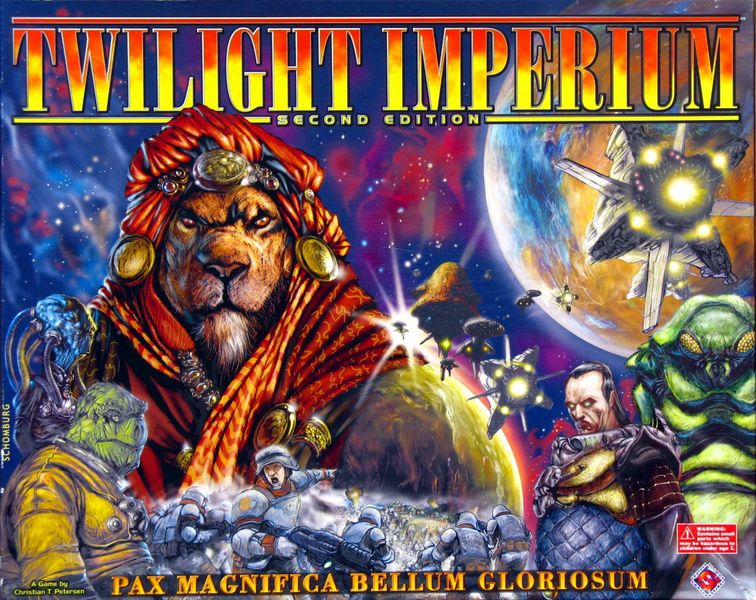Twilight Imperium: Second Edition (2000) Board Game
Twilight Imperium: Second Edition is a highly acclaimed board game that was released in 2000 by Christian T. Petersen and published by Fantasy Flight Games. It falls into the categories of Civilization, Negotiation, Political, Science Fiction, Space Exploration, and Wargame. With a runtime of 240 minutes, the game is designed for 2 to 6 players aged 12 and above.
Game Components of Twilight Imperium: Second Edition
How To Setup Twilight Imperium: Second Edition
Setting up the game involves building the galaxy from hexagonal tiles, with the central tile always being Mecatol Rex. The remaining tiles are arranged in concentric rings around the center. The number of tiles used can be adjusted based on the number of players to ensure a more dynamic and interconnected board. Each player selects a race and receives the corresponding race card and starting units. The game board is then populated with these elements, and players prepare for the first round by distributing resources and initial units.
Gameplay Mechanics and Game Objective
Mechanics
Game Objective
Player Experience
Twilight Imperium: Second Edition offers a deeply strategic and immersive experience, combining elements of military conquest, political maneuvering, and technological advancement. The game is known for its lengthy gameplay, often exceeding six hours, which allows for intricate strategies and dynamic interactions among players. The addition of starting units and streamlined turns makes the game start faster and maintain a more consistent pace.
Pros
Cons
Personal Thoughts on Twilight Imperium: Second Edition
Twilight Imperium: Second Edition is ideal for experienced board game enthusiasts who enjoy deep strategy, complex gameplay, and lengthy sessions. It is a great upgrade for those who enjoyed the first edition, offering significant improvements in both aesthetics and gameplay mechanics. However, it may not be the best fit for casual gamers or those new to strategy board games due to its complexity and lengthy playtime.
We are supported by our audience. When you purchase through links on our site, we may earn an affiliate commission, at no extra cost for you. Learn more.

